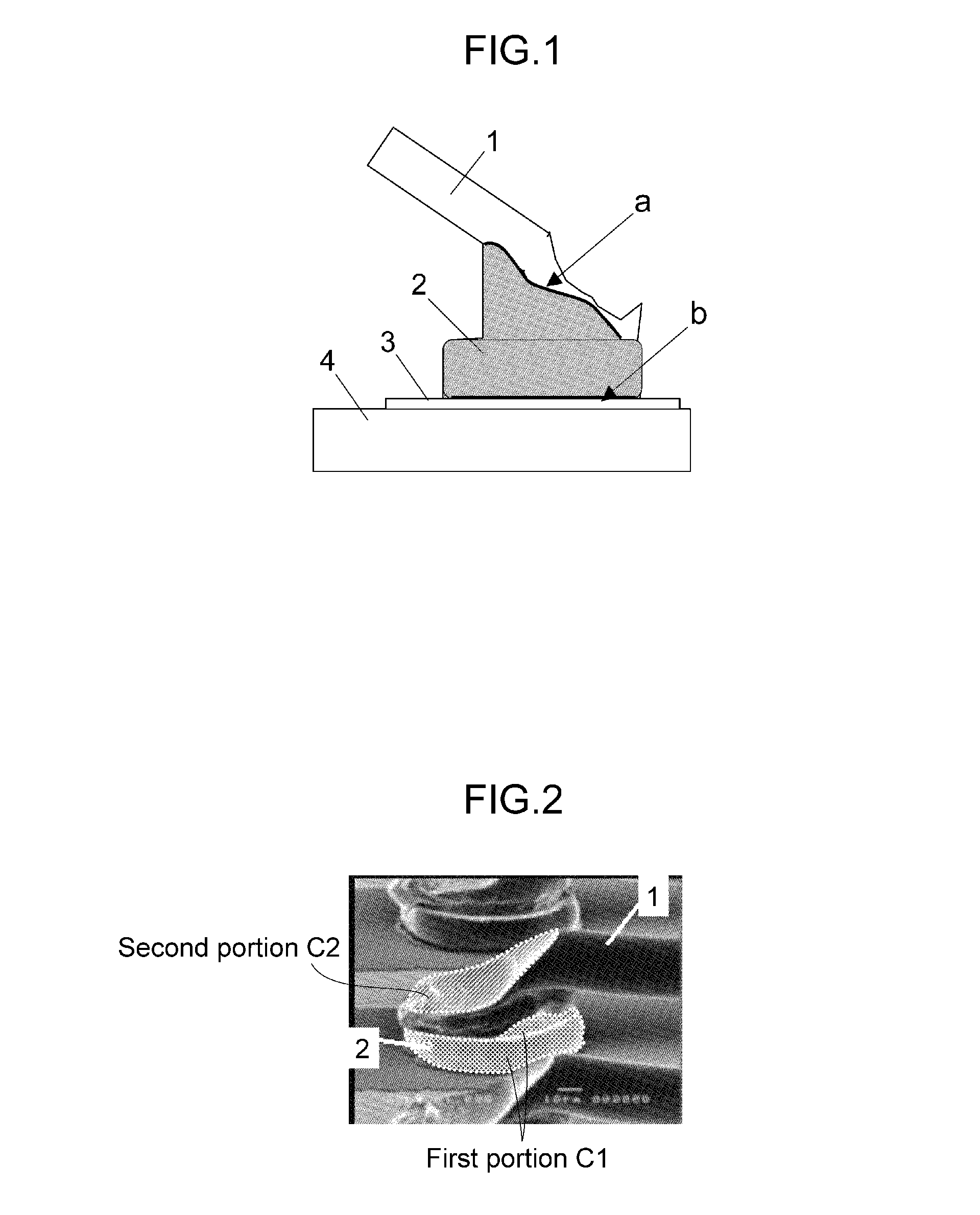Bonding structure of bonding wire
a technology of bonding wire and bonding structure, which is applied in the direction of solventing apparatus, manufacturing tools, transportation and packaging, etc., can solve the problems of short storage life, material cost, and performance degradation of copper bonding wire, so as to improve the continuous operability of bonding, increase the bonding strength, and strengthen the bonding strength
- Summary
- Abstract
- Description
- Claims
- Application Information
AI Technical Summary
Benefits of technology
Problems solved by technology
Method used
Image
Examples
examples
[0112]The present invention will be described in detail by way of examples.
[0113]For cupper as the raw material of the bonding wire, a high purity material having a purity of about 99.99 wt % or more was used, and an alloy having an appropriate amount of P, B, Zr, Bi, La and the like added thereto as alloy elements according to the need was melted to produce an ingot. A raw material having a purity of 99.99 wt % or more was prepared as each material of Pd, Au, Pt and Ag for an outer skin layer. In the case of a monolayer copper wire, predetermined alloy elements were added and melted to produce an ingot. In the manufacturing of a multilayer copper wire, a high-purity copper wire or copper alloy wire narrowed to a certain wire diameter was prepared as a core material in advance, and the electrolytic plating method, the electroless plating method, the vapor deposition method, the fusion method or the like was conducted in order to form an outer skin layer made of a different metal on ...
PUM
 Login to View More
Login to View More Abstract
Description
Claims
Application Information
 Login to View More
Login to View More - R&D
- Intellectual Property
- Life Sciences
- Materials
- Tech Scout
- Unparalleled Data Quality
- Higher Quality Content
- 60% Fewer Hallucinations
Browse by: Latest US Patents, China's latest patents, Technical Efficacy Thesaurus, Application Domain, Technology Topic, Popular Technical Reports.
© 2025 PatSnap. All rights reserved.Legal|Privacy policy|Modern Slavery Act Transparency Statement|Sitemap|About US| Contact US: help@patsnap.com



